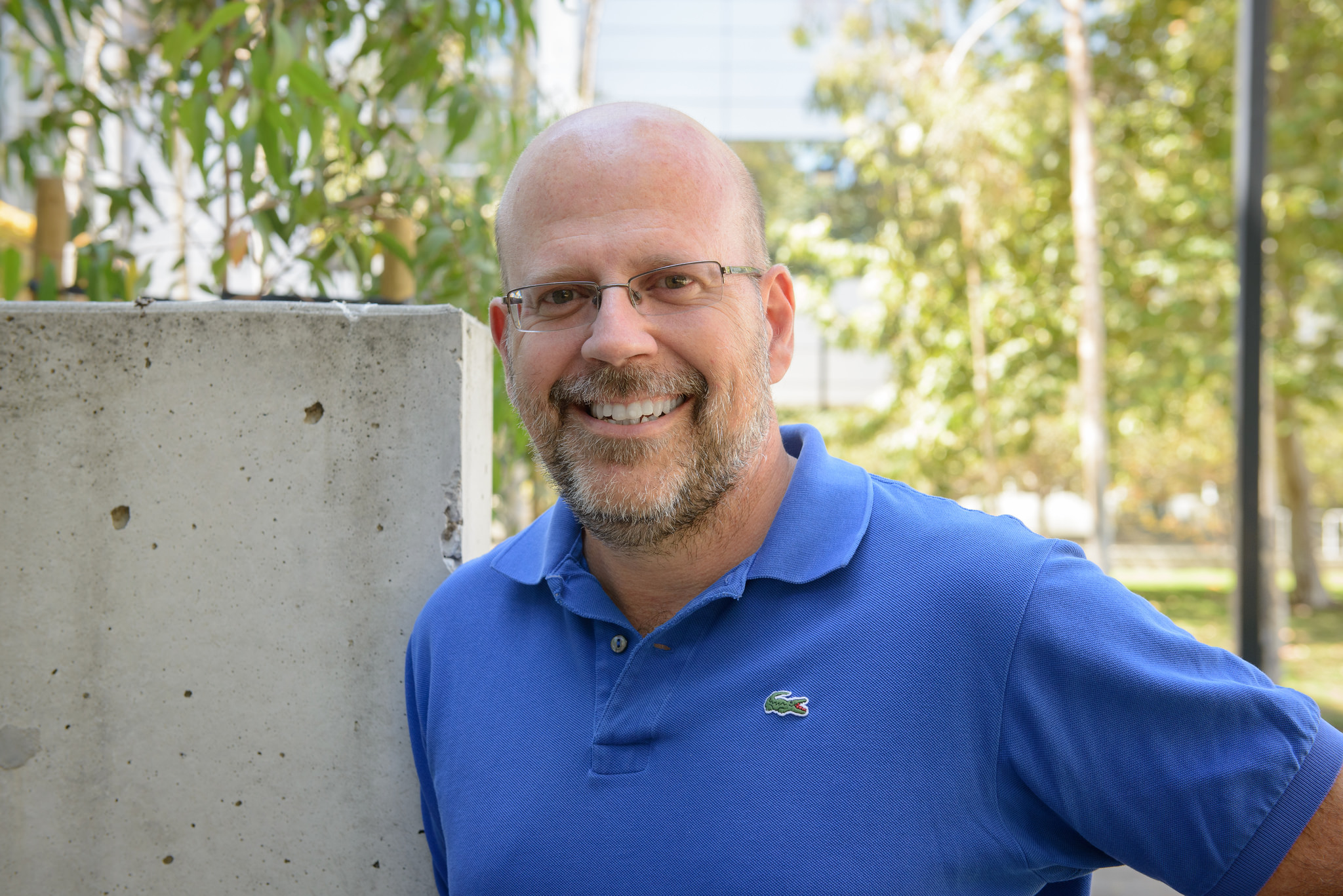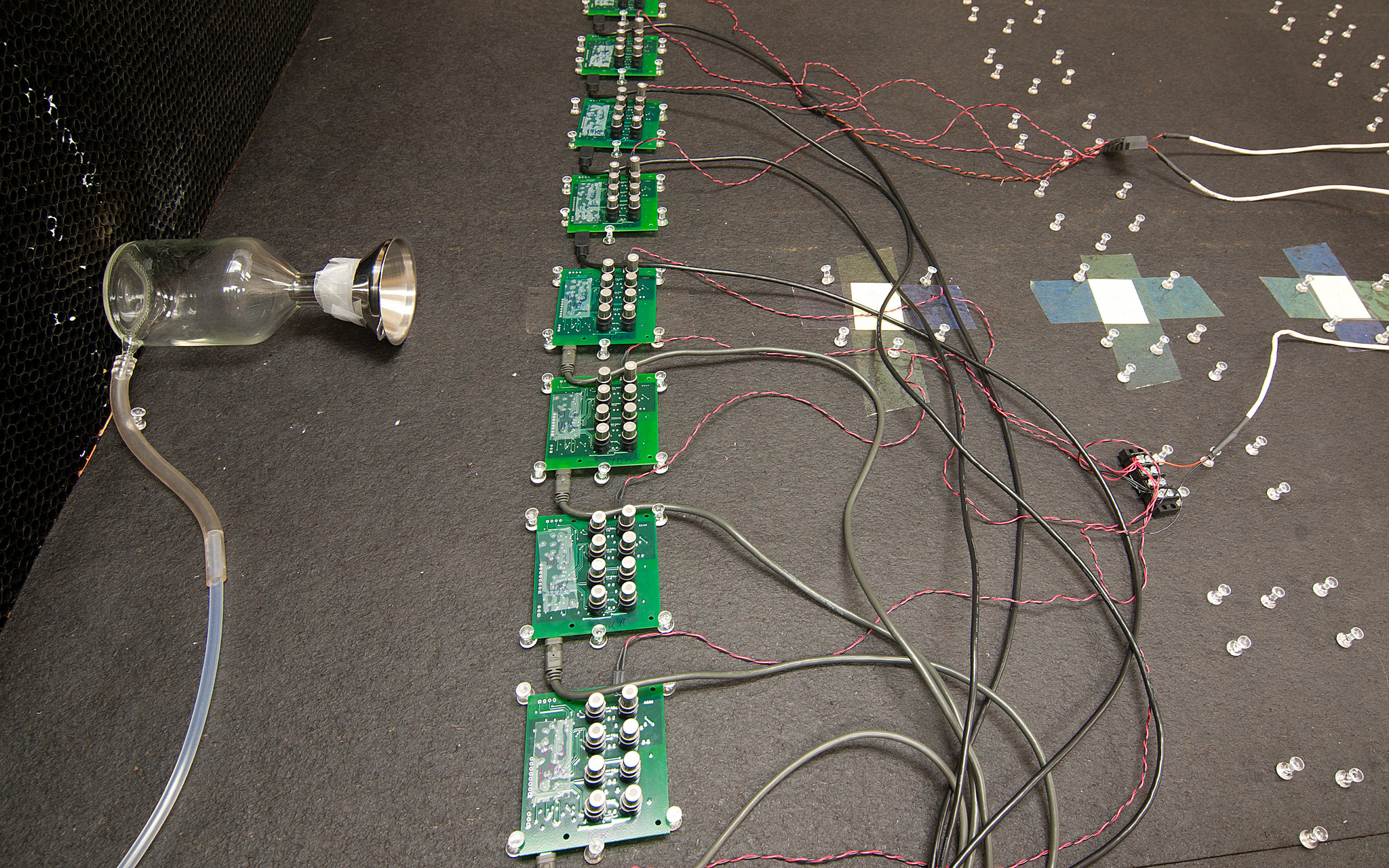Chemical Sensor Array to Monitor Daily Habits of the Elderly, Detect Anomalies
Note: This is the second in a three-part series about Qualcomm Institute research projects that have a direct impact on aging. (Read the first story here). All three projects are funded through the Calit2 Strategic Research Opportunities program. The Qualcomm Institute is the University of California, San Diego division of the California Institute for Telecommunications and Information Technology (Calit2).
San Diego, Calif., Sept. 8, 2014 — As the population of older adults in the U.S. grows, so does the possibility that more and more adults will live alone into their sunset years without a spouse or another individual to care for them.

Meanwhile, health care is increasingly moving toward the use of biometric devices – gadgets embedded with wireless sensors – to unobtrusively monitor patients’ health data in real time, from blood pressure and insulin levels to number of steps walked per day.
This convergence has manifested in a project out of the University of California, San Diego that aims to detect anomalies in an individual’s personal habits using a low-cost chemical sensor array. The array senses environmental changes in the form of chemical, temperature, humidity and pressure changes in a closed environment. It is so sensitive it can detect if a person has just used the toilet, cooked dinner or opened his/her front door.
Ramon Huerta, a research scientist at the UC San Diego BioCircuits Institute and an affiliate of the university’s Qualcomm Institute, is the principal investigator on the project. His gas sensor array offers continuous sensing, monitoring and assessment of the chemicals present in a household environment, which can then be used to create individualized baselines and, eventually, detect changes in habits.
“When you’re going to monitor a home you don’t want to use cameras or microphones because people don’t want to be watched or listened to,” says Huerta. “This is a much less invasive way of making sure an elderly parent, for example, is able to care for himself and is living a healthful life. It’s going to tell you things like when they are cooking and if they have poor quality or rotten food, which is important since the elderly often lack the ability to detect odor in food.”
“More importantly,” he adds, “it can also monitor slow changes in the cognitive degradation of a person. Dementia is a serious problem, and when someone starts forgetting things – when they’ve left the gas on for too long, for example – we would be able to detect these types of changes.”
Huerta and his collaborators – Psychology Professor Herb Hauser of the University of Scranton and Ph.D. candidate Arya Iranmehr of the UC San Diego Department of Electrical and Computer Engineering – plan to eventually adapt the system for use as an alarm device that warns a second party of anomalies that could be considered dangerous. (Repeated use of the toilet, for example, could signify diarrhea and dehydration).

Notes Huerta: “Herb is the actual father of the idea of using chemical sensing to monitor the elderly. He came to me to ask whether we could use chemical sensors to monitor the behavior of the elderly in a noninvasive manner. I am eager to find collaborations with the School of Medicine at UC San Diego to further test these devices.”
The device is comprised of a circuit board, designed by the BioCircuits Institute’s Dr. Nikolai Rulkov with a microprocessor and an array of metal oxide sensors. The sensors, according to Huerta, “have nice properties in terms of robustness” and measure a broad spectrum of chemicals, from carbon monoxide to methane (which is emitted when a human defecates or when food begins to degrade). One sensor array currently costs about $400 and can monitor a house of about 1,000 square feet.
Funding for the project from the Calit2 Strategic Research Opportunities (CSRO) Program will allow Huerta to develop algorithms for anomaly detection and data labeling based on the real-time data wirelessly gathered by the sensor array.
“Whenever a chemical exists in a significant concentration,” he notes, “the sensors can detect it. We need algorithms to be able to discriminate between what is a ‘normal’ concentration of gases, and what isn’t. In order to do that, we need to gather lots of data and label the data, which will allow us to calibrate the model.”
Huerta says his idea for a gas sensor stems from “trying to observe changes in the brains of the elderly” in his work for the Biocircuits Institute (BCI), where he specializes in developing computational models of the brain and genetic circuits for many different biomedical phenomena. This work is developed in collaboration with Prof. Jeff Hasty and Dr. Lev Tsimring of the BCI.
"Genetic circuits are models for how genes of the genome get activated,” Huerta explains. “Whenever there is an external factor coming into a cell, a gene will be activated and will do something to the living cell. The interplay of these genes generates complex behaviors that require modeling to understand.
“The same thing applies to the brain,” he continues. “Many variables are involved in understanding how the brain processes information, and again, multidimensional, dynamic modeling is required to create a meaningful dynamic process.”
Huerta says his work has focused on “finding which ways we can translate knowledge that we learn from olfactory processing in the brain to artificial sensing.”
“We have been interested in olfaction – chemical sensing – because olfaction is the most primitive sensory modality in the brain,” he notes. “It was the first to develop, it’s how cells communicate and is the most basic form of communication. It has progressed from early forms of life to insects and then to mammals, where interestingly in humans, we have lost much of our olfactory ability because we rely more often on vision.”
Huerta acknowledges that it’s not possible to develop a global model for the gas sensor array, since different households will have different habits, “which is why we have to estimate the normal model for a particular home and then measure the deviations,” he explains.
“Models need to be built individually first because there is variability in human behavior. Once there are enough homes/individuals monitored then we could start looking for clusters of people that behave in a similar way. Hopefully there will be enough types or classes of models that would fit best a particular home, but they will always have to be tuned to a particular home/individual.”
Initially, as a proof-of-concept, Huerta has been using the sensor array to monitor his own home for two years. Prof. Hauser, who has a diabetic condition, will also use the device to monitor his home.
“Collecting this data and annotating it is very hard,” Huerta adds. “Let’s say you are cooking pasta – for our data to be valid, you need to remember to go to a spreadsheet and write, ‘I cooked pasta at this time.’ We need lots of these data points to make sure we can calibrate the model appropriately.”
Eventually the team hopes to send graduate students to the homes of elderly individuals to annotate the data in real time. The hope is that in the long-term, an app can be developed from the algorithms to warn individuals (or those who care about them) that something is amiss.
Related Links
Calit2 Strategic Research Opportunities Program (CSRO)
Media Contacts
Tiffany Fox, (858) 246-0353, tfox@ucsd.edu
